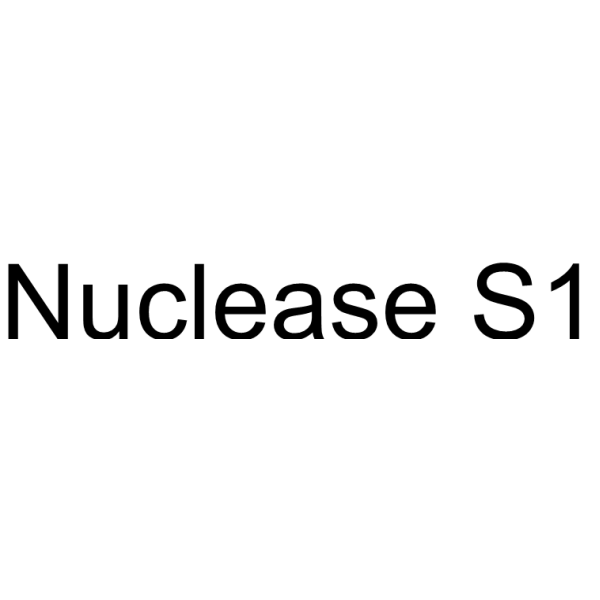Nuclease S1

Nuclease S1 structure
|
Common Name | Nuclease S1 | ||
|---|---|---|---|---|
| CAS Number | 37288-25-8 | Molecular Weight | N/A | |
| Density | N/A | Boiling Point | N/A | |
| Molecular Formula | N/A | Melting Point | N/A | |
| MSDS | USA | Flash Point | N/A | |
|
SAW1 is required for SDSA double-strand break repair in S. cerevisiae.
Biochem. Biophys. Res. Commun. 445(3) , 602-7, (2014) SAW1, coding for Saw1, is required for single-strand annealing (SSA) DNA double-strand break (DSB) repair in Saccharomycescerevisiae. Saw1 physically associates with Rad1 and Rad52 and recruits the Rad1-Rad10 endonuclease. Herein we show by fluorescence micro... |
|
|
Enhanced annealing of mismatched oligonucleotides using a novel melting curve assay allows efficient in vitro discrimination and restriction of a single nucleotide polymorphism.
BMC Biotechnol. 11 , 83, (2011) Many SNP discrimination strategies employ natural restriction endonucleases to discriminate between allelic states. However, SNPs are often not associated with a restriction site and therefore, a number of attempts have been made to generate sequence-adaptabl... |
|
|
Characterization of Sulfolobus islandicus rod-shaped virus 2 gp19, a single-strand specific endonuclease.
Extremophiles 15(5) , 619-24, (2011) The hyperthermophilic Sulfolobus islandicus rod-shaped virus 2 (SIRV2) encodes a 25-kDa protein (SIRV2gp19) annotated as a hypothetical protein with sequence homology to the RecB nuclease superfamily. Even though SIRV2gp19 homologs are conserved throughout th... |
|
|
A crude nuclease preparation suitable for use in DNA reassociation experiments.
Biochim. Biophys. Acta 240(4) , 522-31, (1971)
|
|
|
A nuclease specific for heat-denatured DNA in isolated from a product of Aspergillus oryzae.
Biochim. Biophys. Acta 114(1) , 158-68, (1966)
|
|
|
Characterizing resection at random and unique chromosome double-strand breaks and telomere ends.
Methods Mol. Biol. 745 , 15-31, (2011) Resection of DNA double-strand break (DSB) ends, which results in 3(') single-stranded tails, is an early event of DSB repair and can be a critical determinant in choice of repair pathways and eventual genome stability. Current techniques for examining resect... |
|
|
G-quadruplex structure and stability illuminated by 2-aminopurine phasor plots.
Nucleic Acids Res. 40(9) , 4203-15, (2012) The use of time-resolved fluorescence measurements in studies of telomeric G-quadruplex folding and stability has been hampered by the complexity of fluorescence lifetime distributions in solution. The application of phasor diagrams to the analysis of time-re... |
|
|
Steric exclusion and wrapping of the excluded DNA strand occurs along discrete external binding paths during MCM helicase unwinding.
Nucleic Acids Res. 39(15) , 6585-95, (2011) The minichromosome maintenance (MCM) helicase complex is essential for the initiation and elongation of DNA replication in both the eukaryotic and archaeal domains. The archaeal homohexameric MCM helicase from Sulfolobus solfataricus serves as a model for und... |
|
|
Mph1 and Mus81-Mms4 prevent aberrant processing of mitotic recombination intermediates.
Mol. Cell. 52(1) , 63-74, (2013) Homology-dependent repair of double-strand breaks (DSBs) from nonsister templates has the potential to generate loss of heterozygosity or genome rearrangements. Here we show that the Saccharomyces cerevisiae Mph1 helicase prevents crossovers between ectopic s... |
|
|
In vitro epsilon RNA-dependent protein priming activity of human hepatitis B virus polymerase.
J. Virol. 86(9) , 5134-50, (2012) Hepatitis B virus (HBV) replicates its DNA genome through reverse transcription of a pregenomic RNA (pgRNA) by using a multifunctional polymerase (HP). A critical function of HP is its specific recognition of a viral RNA signal termed ε (Hε) located on pgRNA,... |